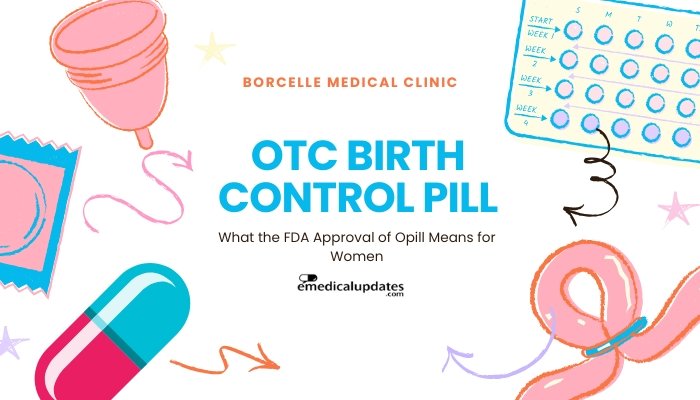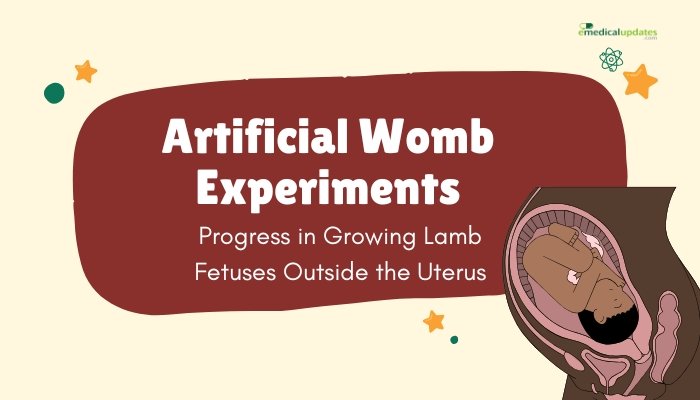Introduction
Infertility impacts millions worldwide, and for some women, the issue is the absence or dysfunction of the uterus. Known conditions like Mayer-Rokitansky-Küster-Hauser (MRKH) syndrome leave some females without a functional womb, while others lose theirs to hysterectomy or medical complications.
Until recently, surrogacy or adoption were the sole options for these individuals to have children. However, a groundbreaking procedure—uterus transplantation—is changing that narrative.
In the past decade, pioneering transplant teams worldwide have restored fertility to some women without a womb. Recipients have successfully carried pregnancies and delivered healthy babies.
This article explores the fundamentals of uterus transplants, their medical process, ethical considerations, and future challenges. Whether you’re curious about reproductive medicine’s frontiers or considering options for uterine-factor infertility, read on to discover how a transplanted uterus can help certain women experience pregnancy firsthand.
Why Uterus Transplants?
Uterine-Factor Infertility
Uterine-factor infertility refers to an inability to carry a pregnancy due to structural or functional issues with the uterus. Common causes include:
- Congenital Absence: Conditions like MRKH syndrome, where the uterus (and sometimes upper vagina) fails to develop.
- Hysterectomy: Surgical removal due to fibroids, heavy bleeding, cancer, or other disorders.
- Severe Uterine Adhesions/Scarring: E.g., Asherman’s syndrome can severely compromise the womb’s lining.
Before uterus transplantation, options were limited to surrogacy—if legal—and adoption. Though surrogacy enables genetic parenthood, some couples long for the experience of pregnancy, leading researchers to explore transplant possibilities.
The Goal of Restoring Fertility
Unlike other organ transplants (kidney, liver, heart) for life-sustaining reasons, a uterus transplant is “ephemeral.” Its primary purpose is to enable gestation of one or two pregnancies. Afterwards, many recipients opt for hysterectomy to avoid long-term immunosuppression side effects. This timeline underscores that uterus transplant is a unique, quality-of-life-based procedure rather than a permanent organ replacement.
A Brief History of Uterus Transplantation
Early Experiments and Challenges
Attempts to transplant a womb date back decades, mostly in animal models. Challenges included:
- Vascular Complexity: The uterus receives blood supply from uterine arteries/veins branching off major vessels. Successful grafting demands precise microvascular surgery.
- Immunological Factors: A transplanted uterus is recognized as foreign, necessitating immunosuppression that must be safe during pregnancy.
- Ethical Debates: Critics questioned whether this procedure was worth the surgical and immunological risks for a non-life-saving organ.
The First Successful Live Birth (2014)
The modern milestone occurred in Sweden at the University of Gothenburg under Dr. Mats Brännström’s team. In 2014, a patient with MRKH syndrome received a uterus from a living donor (a close family friend in her mid-60s). She became pregnant through IVF and gave birth to a healthy baby boy in 2014. This breakthrough proved that transplanted uteruses could function fully, including changes in vascularization during pregnancy and labor contractions.
Since then, multiple centers worldwide (e.g., Cleveland Clinic in the USA, Baylor University Medical Center in Texas, etc.) have launched clinical trials, yielding more successful pregnancies and deliveries. But the procedure remains highly specialized and is still considered experimental in many countries.
Patient Selection and Procedure
Who Qualifies?
Candidates for uterus transplantation typically have:
- Absolute Uterine-Factor Infertility: No functional womb; for example, congenital absence (MRKH) or post-hysterectomy.
- Stable Health: Minimizing surgical and anesthesia risks.
- Desire for Biological Children: They must have intact ovaries (or cryopreserved eggs) to create embryos.
- Psychological Readiness: Undergo counseling about the risks, the need for immunosuppressants, and the ephemeral nature of the transplant.
Additionally, potential recipients must be comfortable with complex fertility treatments—egg retrieval for IVF prior to the procedure, given that fertilized embryos are typically made and frozen before the uterus transplant.
Donor Types: Living vs. Deceased
- Living Donor: Often a close relative or friend who has completed childbearing. Surgeons remove the uterus carefully, preserving arterial and venous branches. This approach can yield a high-quality graft but poses surgical risks for donors.
- Deceased Donor: The uterus is procured from a brain-dead or cardiac-dead donor, similar to other organ transplants. This removes the risk to a living donor but may require more complex retrieval methods and introduces potential timing constraints.
Surgical Steps
- Pre-Transplant Preparations: IVF is completed; multiple embryos are frozen. Recipients optimize health and sign robust consent documents.
- Uterus Retrieval: For living donors, surgeons carefully dissect the uterus, preserving its vessels. Deceased donors undergo standard retrieval protocols.
- Transplant Surgery: The donated uterus is connected via microvascular techniques—suturing uterine arteries and veins to recipient vessels. Surgeons also anchor the uterus to supportive ligaments or pelvic structures.
- Recovery and Immunosuppression: Recipients start an immunosuppressive regimen (e.g., tacrolimus, mycophenolate mofetil) to prevent rejection. In the following months, healing and stabilization are monitored.
The Journey to Pregnancy
Post-Transplant Monitoring
After successful engraftment:
- Checking Rejection: Regular ultrasounds, endometrial biopsies, and blood tests watch for early rejection.
- Hormonal Regulation: The transplanted uterus must respond to the recipient’s endogenous hormones or exogenous hormone therapy, building a functional lining.
- Menstruation: Some women menstruate once the uterus integrates, an encouraging sign that the endometrium can shed and regenerate.
Embryo Transfer
When doctors confirm stable uterine blood flow and no acute rejection, the recipient can undergo embryo transfer. Key points:
- Timing: Typically 6–12 months after transplant to ensure the graft is healthy.
- Medication Adjustments: Balancing immunosuppressants with supportive fertility meds.
- Monitoring Pregnancy: Prenatal care includes scans to verify fetal growth and placenta function. Potential complications like preeclampsia must be managed carefully, as immunosuppression can mask certain symptoms.
Delivery
Most uterus transplant recipients deliver via Cesarean section (C-section). Vaginal birth is theoretically possible in some setups but is generally considered riskier:
- Protecting the Graft: Minimizing strain on the transplanted uterus.
- Practical Considerations: Minimizing labor time, controlling the environment, and ensuring the baby’s well-being.
Post-delivery, recipients either plan a second pregnancy or eventually proceed with hysterectomy to stop immunosuppressants.
Success Rates and Key Outcomes
Live Birth Statistics
- Sweden’s Landmark Trial: Over a dozen uterus transplants, resulting in multiple live births.
- United States Trials: Centers like Baylor have produced multiple successful pregnancies. Overall success rates vary, but each birth cements feasibility.
- Global Uptake: Countries including Turkey, India, Brazil, and Germany have reported or are planning uterus transplant programs.
Though the sample size remains small, the proportion of transplanted wombs leading to at least one successful pregnancy is steadily rising with refined protocols.
Graft Survival and Complications
Potential complications include:
- Vascular Thrombosis: The delicate blood vessels can clot, causing graft failure.
- Infections: Occur with immunosuppression. Regular checkups help catch early signs.
- Rejection Episodes: Usually manageable with medication increases if caught early.
- Preterm Labor or Other Obstetric Risks: Some pregnancies result in preterm deliveries or smaller babies, partly due to immunosuppressant side effects.
Despite these risks, outcomes have been mostly positive for carefully screened recipients, underscoring that the procedure can be safe in the right setting.
Ethical and Social Considerations
Risk-Benefit Debate
Critics question whether major surgery and long-term immunosuppression are justified for a non-life-saving organ. However, advocates emphasize the psychological and emotional value of pregnancy for some women, as well as the normative acceptance of other “quality-of-life” transplants such as face or hand transplantation.
Donor Welfare
- Living Donors: They undergo a hysterectomy procedure which carries surgical risks. Ethically, each must be fully informed.
- Deceased Donors: Use of a uterus from a deceased individual is less ethically fraught but raises logistical hurdles, as timing for retrieval must be precise.
Access and Cost
Uterus transplant programs are highly specialized, often funded by research grants or philanthropic contributions. Widespread clinical availability might hinge on regulatory approvals, insurance coverage, and the ability of centers to provide complex surgical teams and post-op follow-up.
Future Directions
Improving Immunosuppression
Researchers investigate ways to minimize or eliminate immunosuppression. Approaches may include:
- Cell Therapies: Infusions of regulatory T cells or other tolerance-inducing cells.
- Gene Editing: Modifying donor tissue to be less antigenic.
- Chimeric Protocols: Inducing partial immune “tolerance” using combined bone marrow transplants from the donor.
Artificial or Bioengineered Uterus
Longer term, an entirely synthetic or bioengineered womb might bypass immunosuppression:
- Decellularized Uterine Scaffolds: Similar to other organ decellularization efforts, re-seeded with recipient’s stem cells.
- 3D Bioprinting: Possibly printing functional tissue, though replicating the uterine vasculature and muscular layers is challenging.
Expanding Inclusion Criteria
While the procedure primarily serves women with absolute uterine-factor infertility, future protocols may explore:
- Transgender Women: Some have expressed interest in gestational capacity. Uterus transplantation for trans women remains theoretically possible but faces added anatomical, hormonal, and ethical complexities.
- Lifestyle or Age-Related: As technology evolves, debates might arise about whether older or certain non-traditional candidates can receive uterus transplants.
Frequently Asked Questions
- Can a transplanted uterus produce normal menstrual cycles?
- Yes, many recipients begin menstruating post-transplant, indicating viable endometrial function.
- Do recipients use their own eggs?
- Typically, yes. They undergo IVF to create embryos before the transplant, which are then transferred once the transplanted uterus is stable.
- How long does the transplanted uterus stay in place?
- Often just for 1–2 pregnancies. A hysterectomy is recommended afterward to allow the recipient to stop immunosuppressants.
- What are the success rates?
- While each program varies, a growing proportion of these transplants result in at least one successful pregnancy—around 75–80% in some well-established centers.
- Is the baby genetically related to the recipient?
- Yes. The transplanted uterus does not alter the genetic relation. The child is biologically linked to the mother’s egg (and father’s sperm, if used) but gestates in the transplanted womb.
Conclusion
The advent of uterus transplantation has opened a transformative possibility: women once deemed permanently infertile due to uterine absence or damage can now carry pregnancies and deliver healthy babies. Overcoming decades of doubt, surgeons and researchers worldwide refined complex techniques, from living and deceased donors to advanced immunosuppressive regimens. Though still classified as experimental, each successful delivery underscores the procedure’s safety and feasibility for select candidates.
Challenges remain—especially relating to immunosuppression side effects, donor risks, cost, and access. Yet, with ongoing trials and a growing volume of international data, uterus transplants are on track to evolve from a cutting-edge experiment into an established infertility treatment option. For many women who have long dreamed of experiencing pregnancy and childbirth, this medical innovation offers more than hope: it offers a chance at parenthood that was once out of reach.
References
- Brännström M, et al. (2015). “First baby born after uterine transplantation.” The Lancet.
- Baylor University Medical Center. (2020). Uterus transplant program updates and clinical trial data.
- Cleveland Clinic. (2021). “Uterus Transplant outcomes: success rates and patient experiences.”
- Flyckt R, Falcone T. (2017). “Uterine transplantation: the new frontier in transplant surgery.” Fertility and Sterility.
- Johannesson L, et al. (2019). “Immunosuppression strategies in uterine transplantation: a review of experience.” American Journal of Transplantation.





